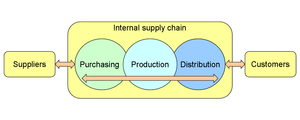Done with 2011 - Ready for 2012
- Monday, 12 December 2011
- Management

 Well, it's another year come and gone. In a couple of weeks most companies will close out their fiscal year end. It's been an interesting year to say the least. Uncertainty around global economies being the biggest concern. However there are signs of good things that have happened during 2011, one of those being the change in mentality for companies to take a deeper look into their processes and implement several cost saving or efficiency measures to work smarter. Below I've recapped my observations -
Well, it's another year come and gone. In a couple of weeks most companies will close out their fiscal year end. It's been an interesting year to say the least. Uncertainty around global economies being the biggest concern. However there are signs of good things that have happened during 2011, one of those being the change in mentality for companies to take a deeper look into their processes and implement several cost saving or efficiency measures to work smarter. Below I've recapped my observations -
Enterprise Schedulers vs EDI Schedulers
- Tuesday, 10 May 2011
- Integration

 Some organizations (especially Fortune 1000 companies) chose to use enterprise level job scheduling software (aka Workload automation) for all IT jobs not just EDI. The enterprise scheduling software is maintained by the IT operations team and includes dozens of other jobs in addition to EDI such as mainframe jobs, SAP jobs, PeopleSoft jobs and etc. The scheduling software has adapters installed on the servers where the jobs are actually executed and they run as a service. Then the operations team uses a client version of the software to set up the jobs and monitor them. Some examples of popular job schedulers (in no particular order) are Control-M, Tidal Enterprise Scheduler, BMC CONTROL-M, and IBM Tivoli Workload Scheduler. There are a also half-a-dozen open-source job schedulers out there as well.
Some organizations (especially Fortune 1000 companies) chose to use enterprise level job scheduling software (aka Workload automation) for all IT jobs not just EDI. The enterprise scheduling software is maintained by the IT operations team and includes dozens of other jobs in addition to EDI such as mainframe jobs, SAP jobs, PeopleSoft jobs and etc. The scheduling software has adapters installed on the servers where the jobs are actually executed and they run as a service. Then the operations team uses a client version of the software to set up the jobs and monitor them. Some examples of popular job schedulers (in no particular order) are Control-M, Tidal Enterprise Scheduler, BMC CONTROL-M, and IBM Tivoli Workload Scheduler. There are a also half-a-dozen open-source job schedulers out there as well.
The ROI of EDI - Survival or Profitability
- Tuesday, 02 August 2011
- EDI


Is there a return on investment calculation for EDI, or is ROI simply a matter of keeping or gaining a customer? Should there even be a return on an investment for EDI? These are questions that continue to crop up whenever the issue of EDI upgrades, additions, or staffing levels are at hand. But I think these questions are misplaced at best and miss the point of EDI completely. Here’s why.
Most Read
-

-
Feb 17 2012
-
Written by Scott Koegler
-
-

-
Feb 13 2019
-
Written by Scott Koegler
-
-

-
Feb 13 2013
-
Written by Scott Koegler
-
-

-
Jul 18 2017
-
Written by Super User
-








